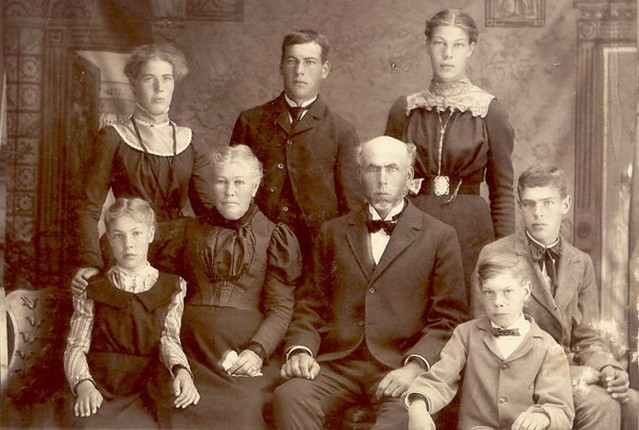 Toward the end of his life, Robert Lord Sargent set out on an adventure. His 1831 letter written from Mobile, Alabama shows him working for Bebe __ Clark at one Dollar and fifty cents per day "and Vitaels & Drink."
Toward the end of his life, Robert Lord Sargent set out on an adventure. His 1831 letter written from Mobile, Alabama shows him working for Bebe __ Clark at one Dollar and fifty cents per day "and Vitaels & Drink."Why would a man of 61 end up working in Alabama, far away from his roots and family? One theory is he may have traveled on his son's ship and decided to stay a while in Alabama. At that time his children were grown and perhaps he felt a freedom to travel. Another theory is that he hoped to make more money in Alabama than in Maine. In his 1831 letter he states that he may go to Texas in search of Spanish dollars. This 1831 letter is our last known record of Robert L. Sargent alive. It is a record of a man on a mission, working away, but missing his family.
Robert was born in the year 1771 in Marblehead, Massachusetts around October 6th. (Marblehead Vital Records, Vol. 1, pp 456). The population of Maine began to grow in the mid-1700's, after the Indian threat lessened. The offer of 100-acre lots free to anyone who settled in the northern province doubled the population of Maine from 12,000 to 24,000 between 1743 and 1763. By the end of the century, the number of Maine settlers had grown to more than 150,000.
Robert L. Sargent may have come to Long Island (Isleborough) to work first, as by c 1792 at the age of about 21 he married Mary Dodge, a daughter of Simon Dodge of the prominent Dodge family who were among the first settles there. He probably was apprenticed in the building industry at an early age to learn the carpenter's trade, the trade of his father Winthrop. By May of 1796 Robert paid $120 for 100 acres of land, probably in today's Searsport. He was 25 years old at the time. More deeds followed, and Robert was probably building houses on the parcels he bought. The book Remarks of My Life by Hezekiah Prince sheds light on what life might have been like for young Robert L. Sargent, a carpenter in Maine.
12 May 1796 - Hancock Registry, volume 4, page 210
(below from Waldo Registry)
Henry Lord of Prospect, yeoman, for $120 paid by Robert P. Sargent of said Prospect quit claim to "100 acres of land laying in Prospect and is bounded in following manner, to begin on the shore of the mouth of a small brook at a stake and stones, being bound between Winthrop Smith & myself, run North forty rods forty-two degrees West to a hemlock stump, then North fifteen degrees West, one mile and three quarters to a stake and stones, then north sixty-eight degrees East 50 rods to a yellow birch marked R. S. then south twenty-two degrees East a half a mile to a yellow birch marked R. S. then to run southeasterly a mile and a quarter till it comes to the shore at a stake and stones, it being 70 rods from the first mentioned bounds to the East, the upper fifty acres is half of a lot I took a permit of Benj. Shut Esq. Agent for General Knox at one dollar per acre, the front part, be the same more or less, I signed for to General Knox for four shillings per acre." The deed was signed by Henry Lords in the presence of Winthrop Smith and William Griffin. Wife Molly also gave up her right of dower.
And so begins Robert's many dealings in land over the course of his life.
These notes were taken by JGS from the deeds and are not direct quotes of the deeds - dates and volume numbers for the deeds are noted for those who would like to do further research.
Robert L. Sargent and his father Winthrop Sargent are listed in the Waldo County Census as residents of Prospect, Maine. In the census under the heading "From Whence Came" both Robert L. and Winthrop are listed as coming from Beverly, Massachusetts. Deeds from that time describe Robert L. Sargent with various titles: carpenter, housewright, yeomen, joiner, and gentleman. We also know he was a deacon of his church.
Robert L. Sargent and his father Winthrop Sargent are listed in the Waldo County Census as residents of Prospect, Maine. In the census under the heading "From Whence Came" both Robert L. and Winthrop are listed as coming from Beverly, Massachusetts. Deeds from that time describe Robert L. Sargent with various titles: carpenter, housewright, yeomen, joiner, and gentleman. We also know he was a deacon of his church.
We don't know why Robert Lord Sargent ended up in Alabama. We do know at the time of his writing his 1831 letter that he missed his family and had hopes to return to them in Maine bearing gifts. But 1840 foreclosures on land held by Robert L. Sargent suggest that Robert did not return to Maine. Perhaps he died of yellow fever in Mobile, a common cause of death in the region.
Or perhaps Robert did travel to lawless Texas,
in search of Spanish Dollars?

It's a mystery.
Any detectives out there?


Thanks for sharing this information! My mother was a Sargent from Dora, AL, and I never knew her father, Clarence Allen "Sonny" Sargent so I've just recently started exploring my family roots with the Sargent's. Fascinating!
ReplyDelete